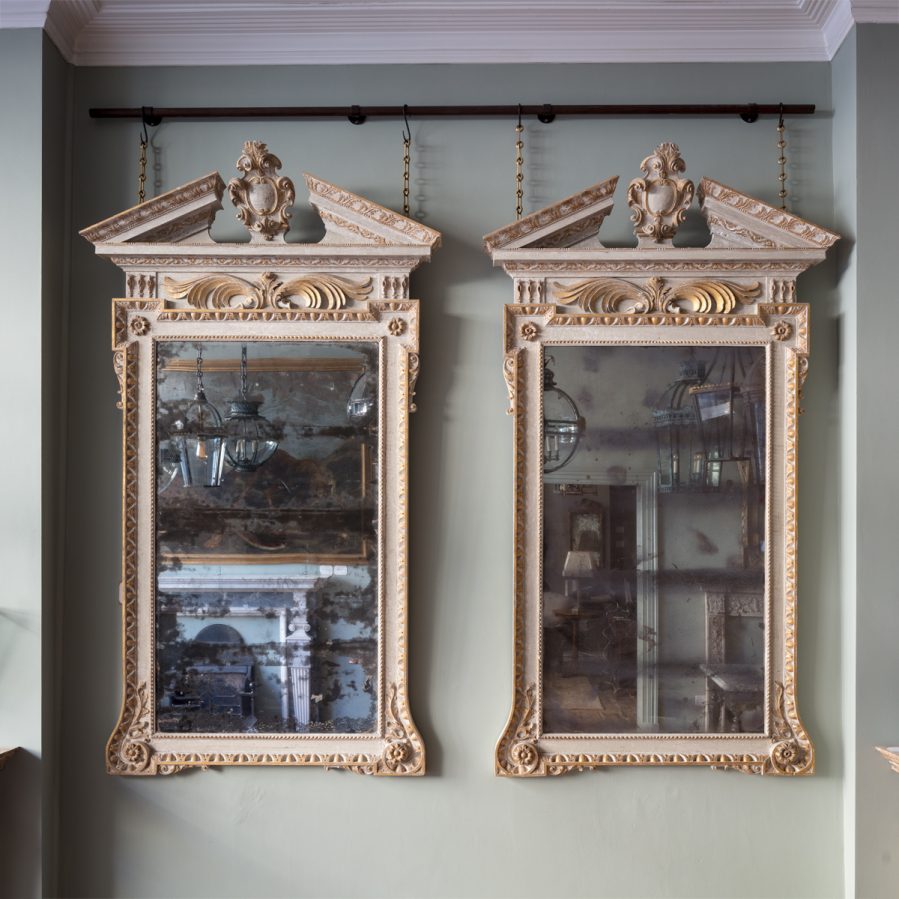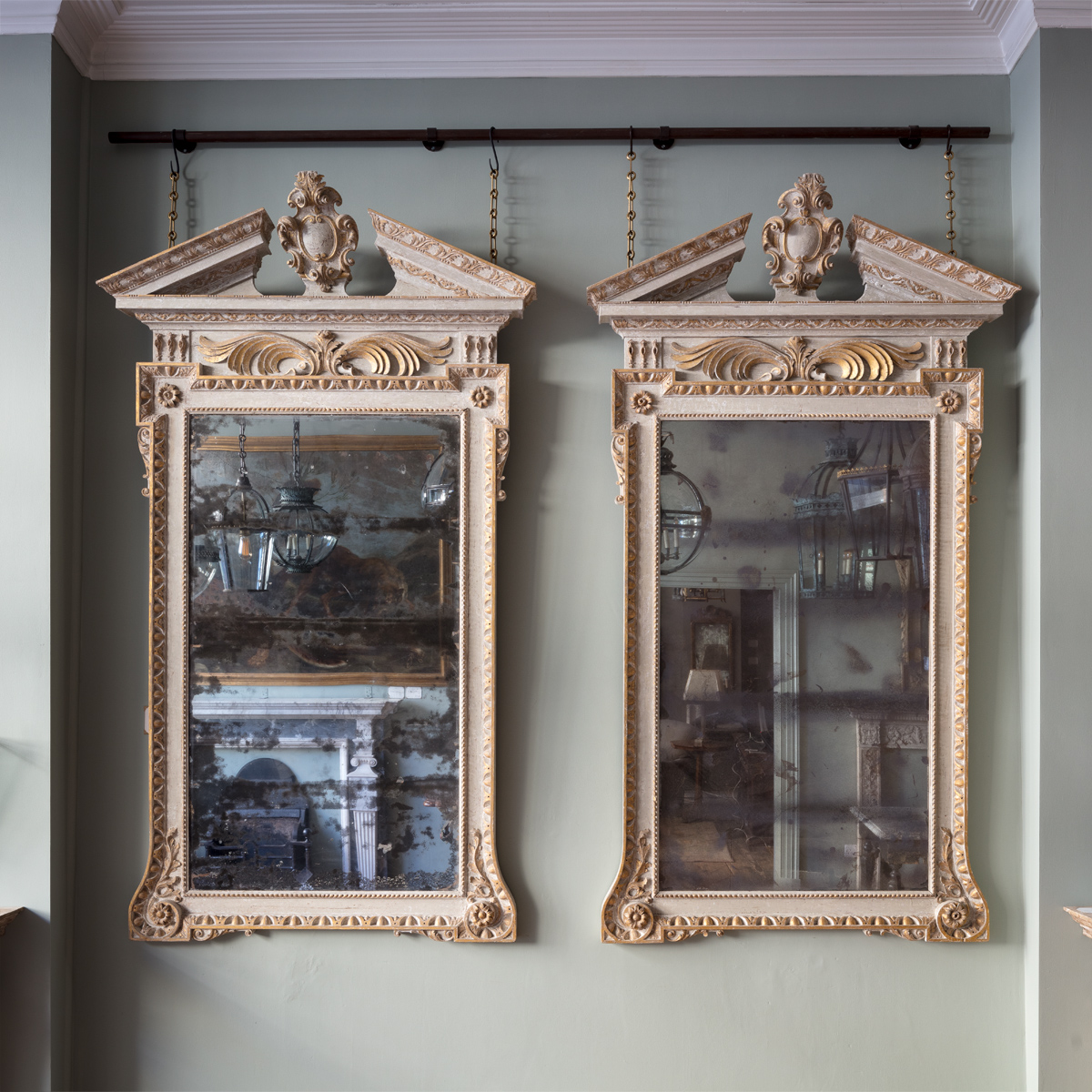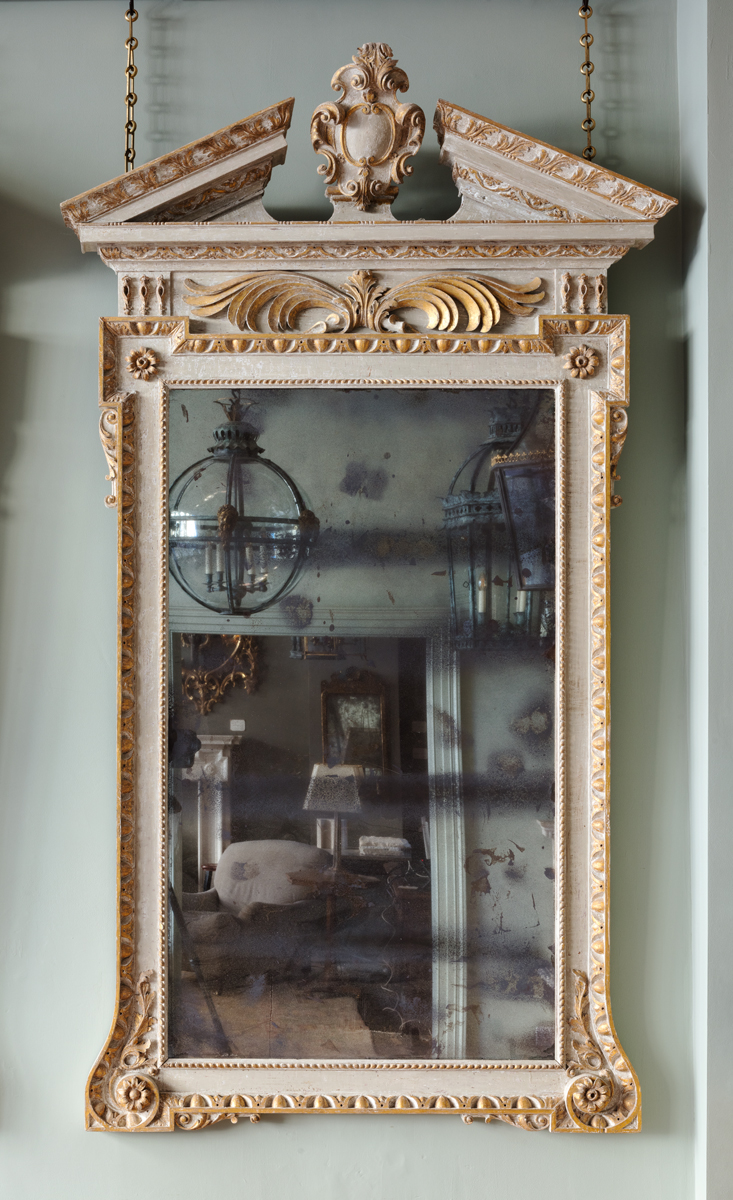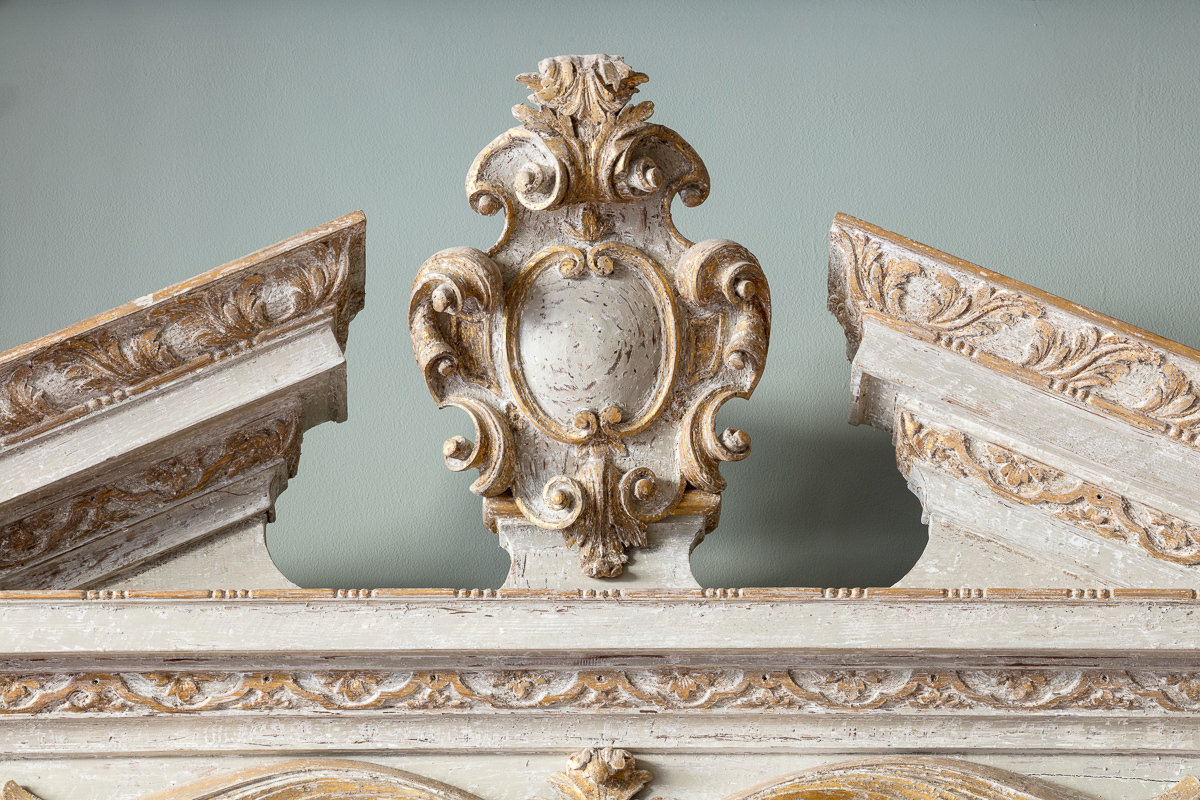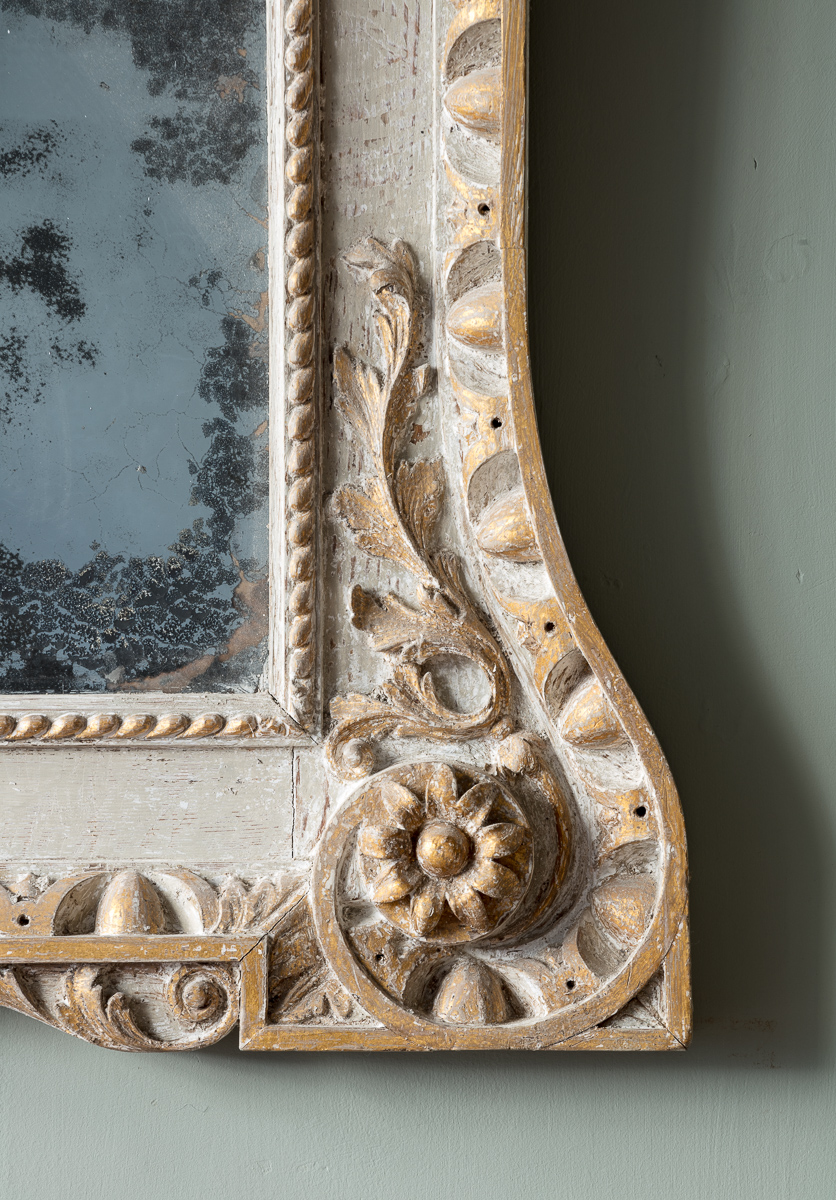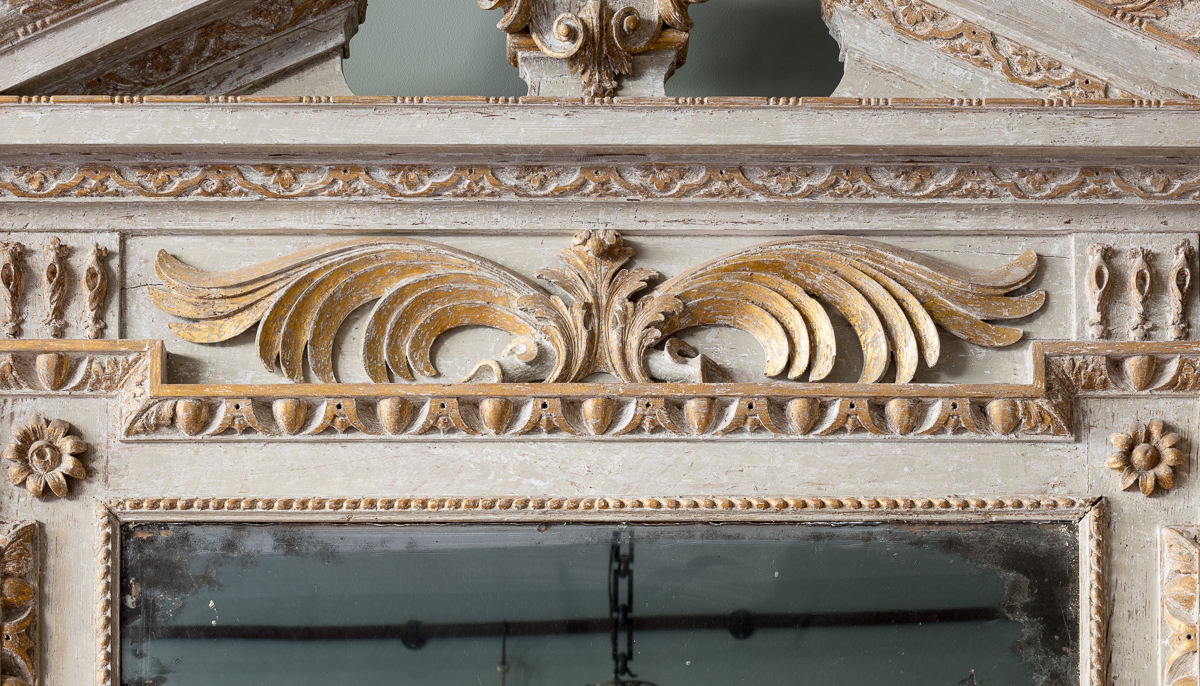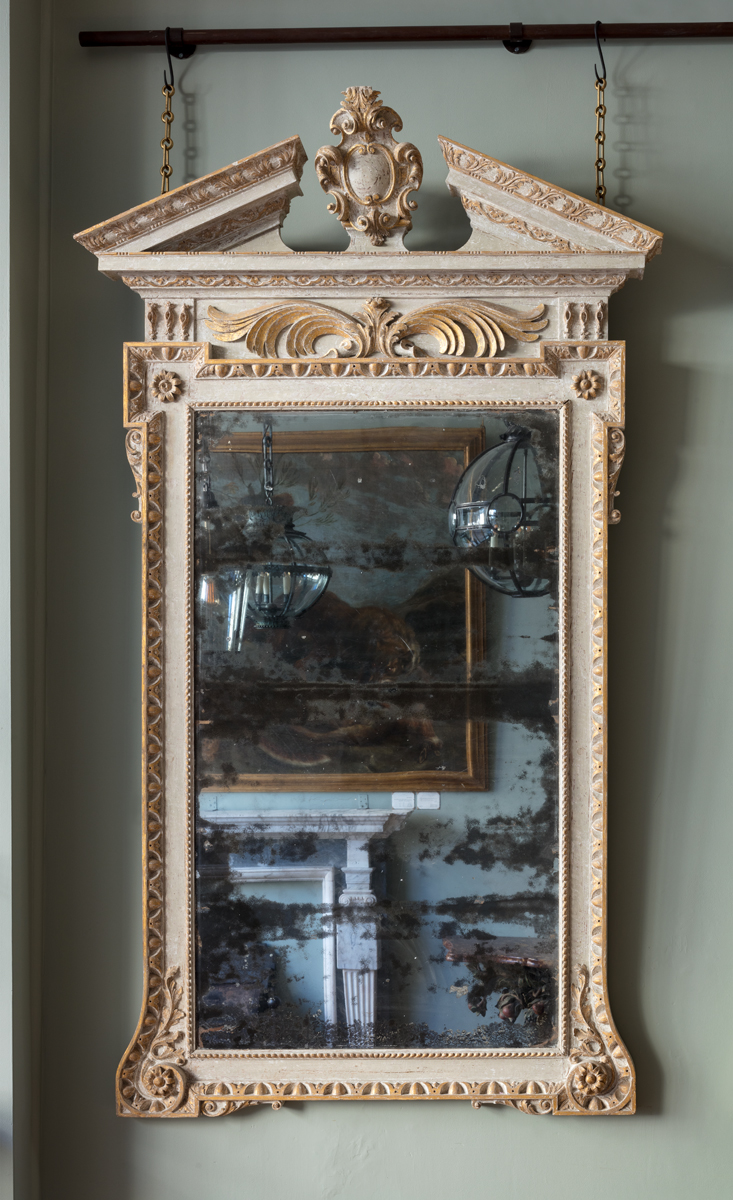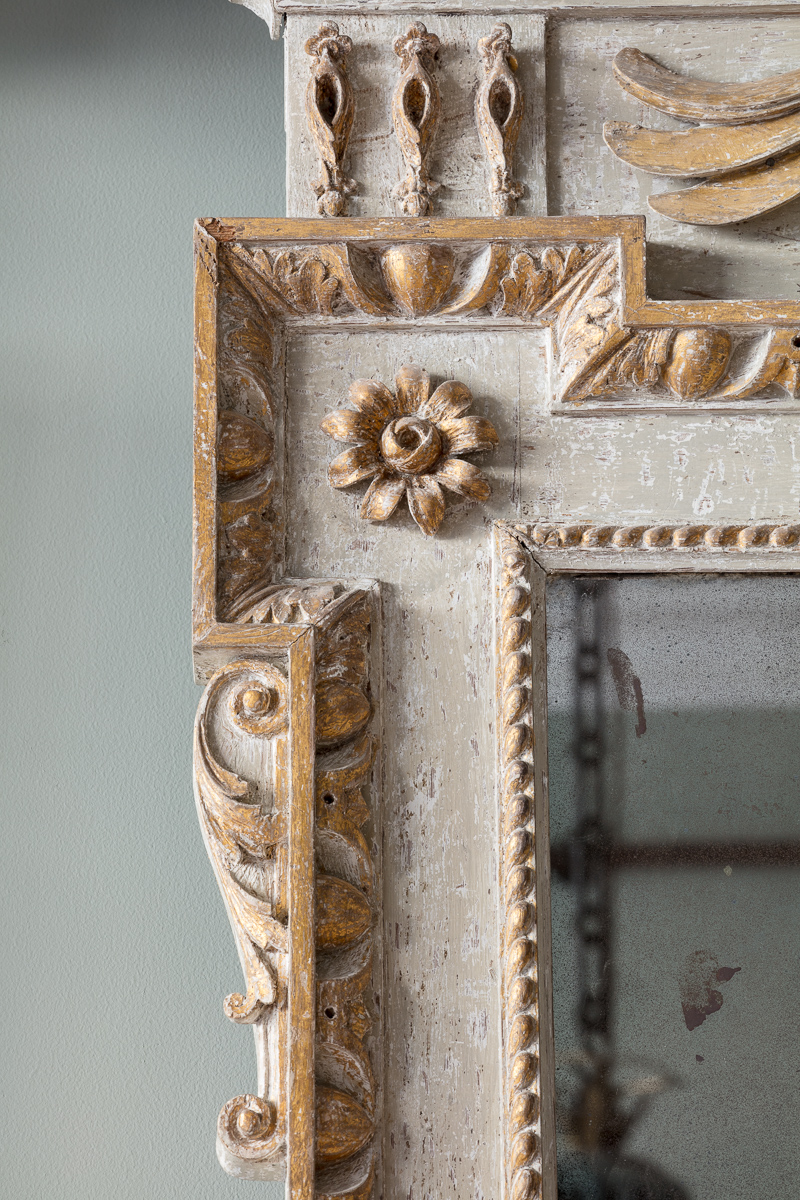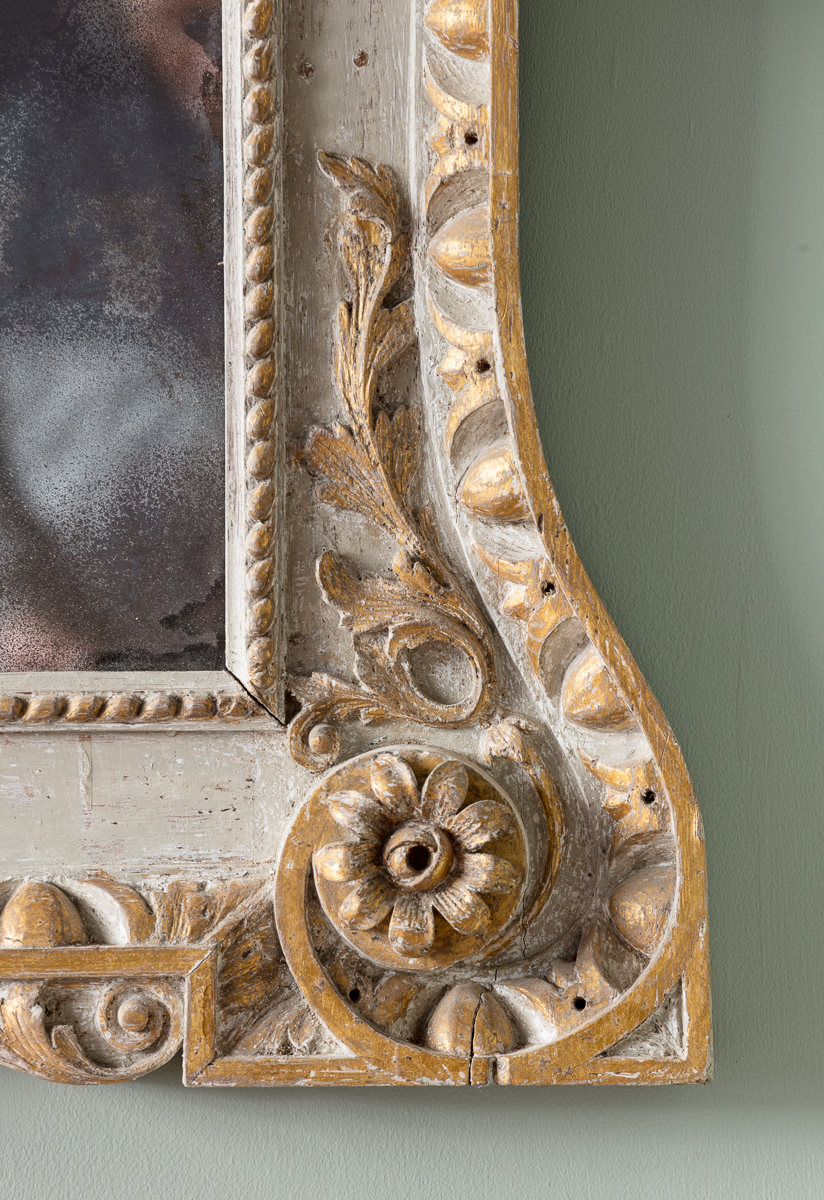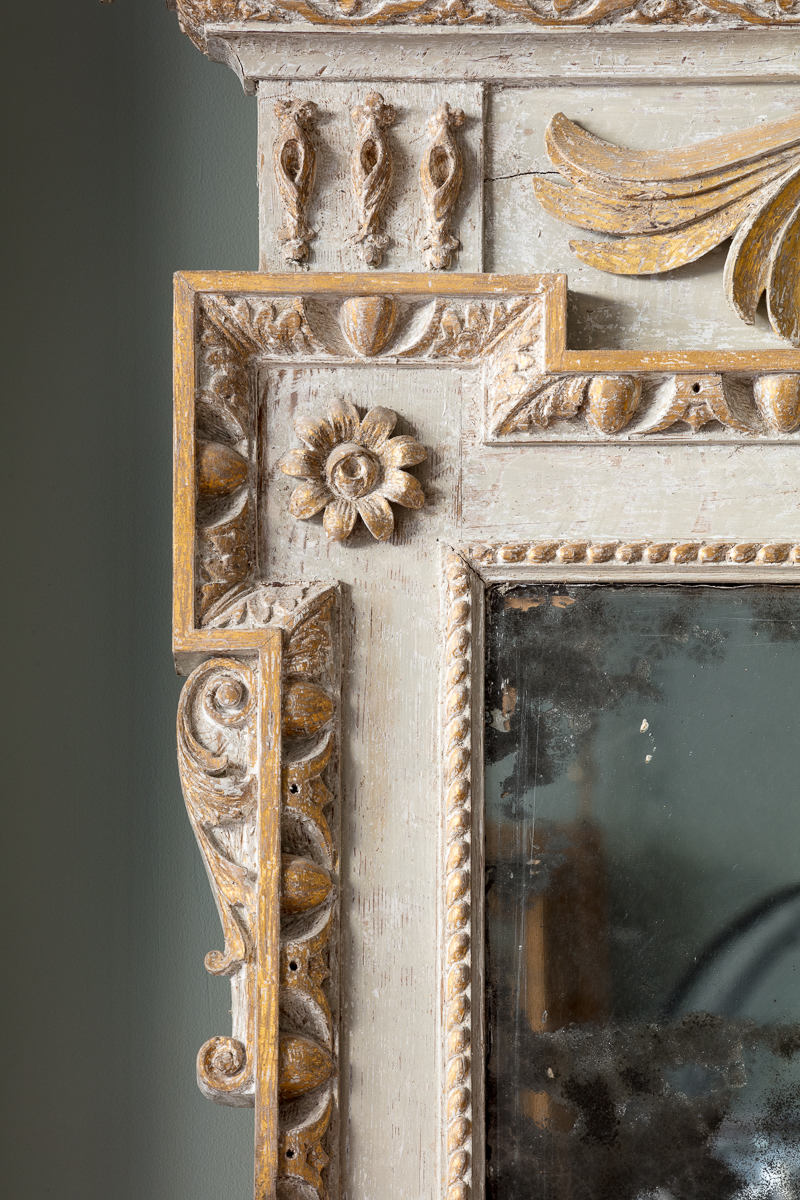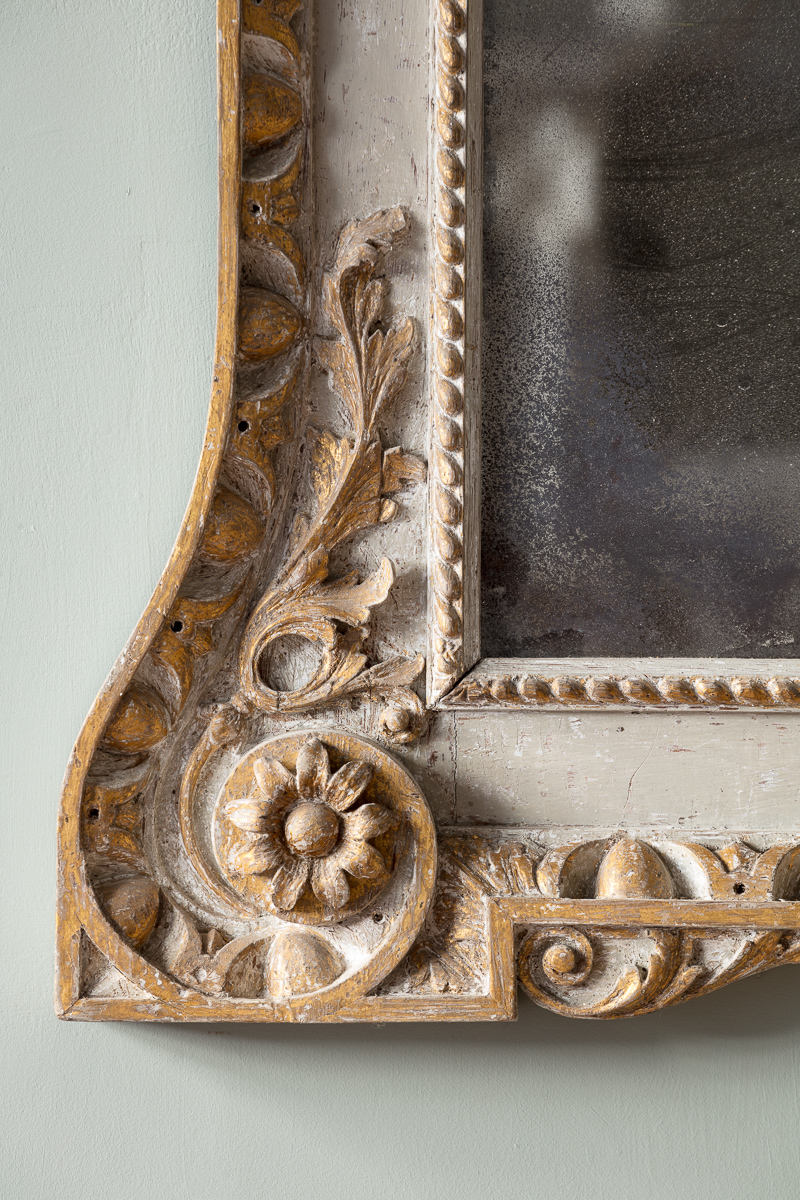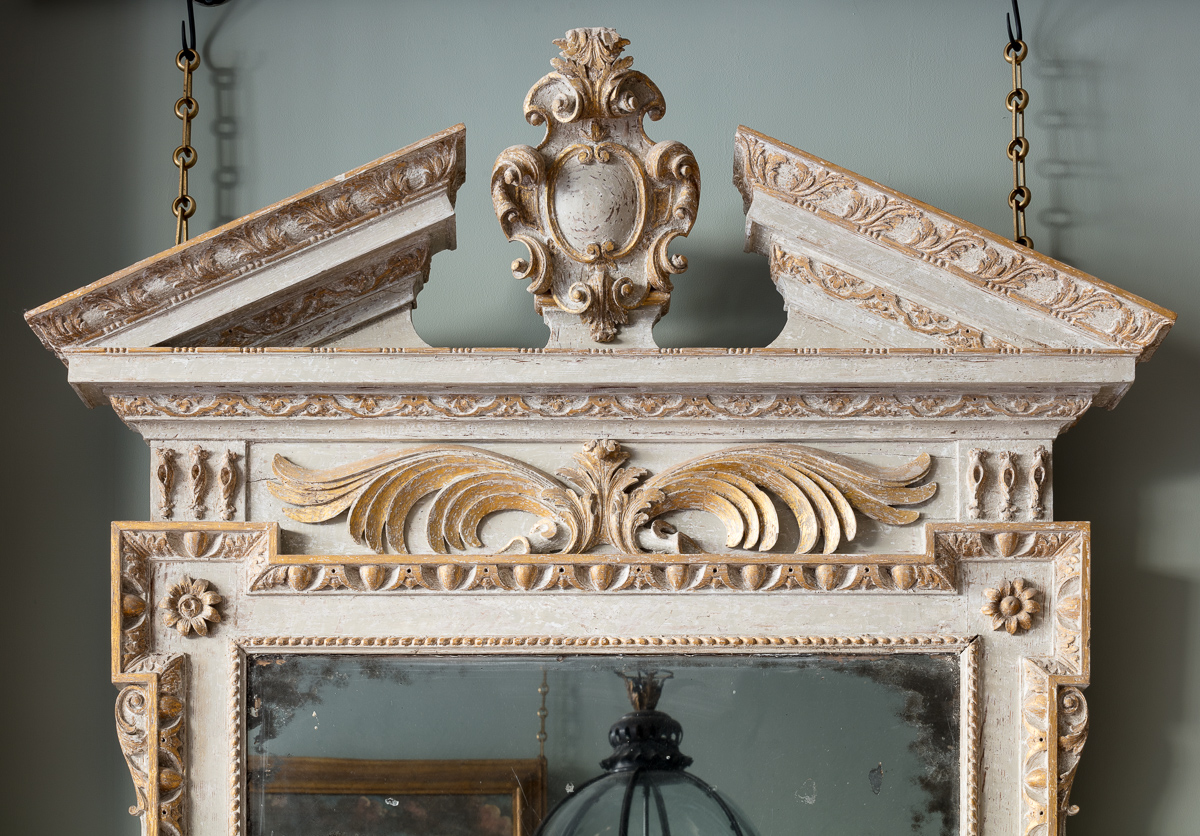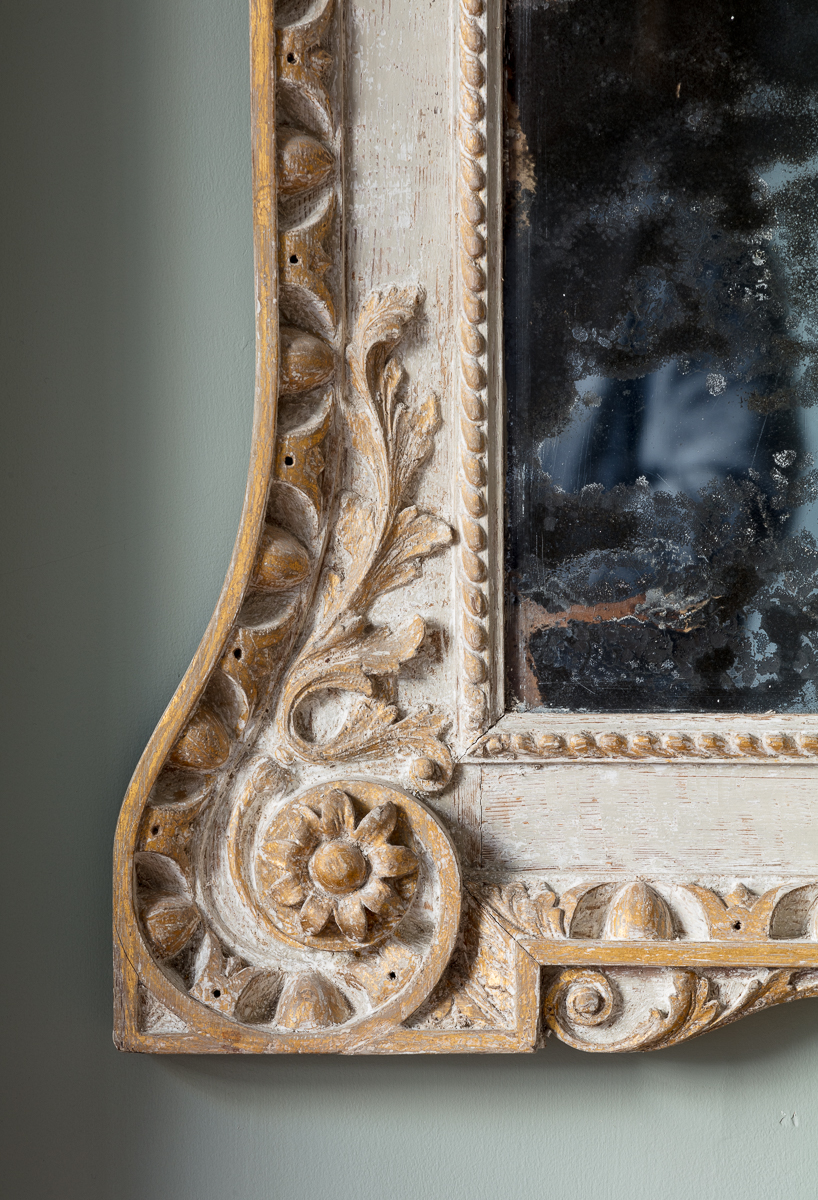A Monumental Pair of Architectural George II Parcel Gilt Mirrors
These fine mirrors are of particularly large and important scale and reflect the fashion for architect-designed mirrors that informed the taste of the connoisseurs of the period. The mirrors are of tabernacle form, the broken pediments centred with cartouches. The carved ornament on the frames consists of a variety of egg and dart and ovolu mouldings, in combination with applied gilt rosettes and scrolling foliage. They are painted white with parcel gilt highlights, and the form of the mirrors reflects the designs of William Jones, as published in his Gentlemens or Builders Companion, 1736. The palm frond design used on the friezes of the mirrors is often associated with the architect and designer John Vardy, a disciple of William Kent from their time together at the Board of Works in London. Vardy’s interiors include Spencer House in St James’ where he made particular use of the palm frond motif, both on the pediment of the house and, most spectacularly, in the famous palm room. The motif is often thought to represent victory whilst also having associations with fertility that made it particularly relevant in a bedroom setting. Adam Bowett in his Early Georgian Furniture, 1715-1740 suggests that mirrors of the present form were seen as ’emblem(s) of what came to be perceived as the national or “British” style’ in this period.
The two mirrors have a variety of chalk inscriptions and printed labels on the backs. The majority of these have MH prefixes or, in the case of one label, an HAR prefix and what appear to be references to the year 1924. It is highly likely that these are Moss Harris and Sons inventory numbers, suggesting that the mirrors once formed part of the stock of that highly important dealer. Certainly in 1983 the mirrors were exhibited by Partridge Fine Art of Bond Street in their Summer Exhibition, the mirrors being item number 15 in that year’s catalogue.
One of the mirrors retains its original plate, the other a replacement. Carefully dry stripped to reveal the original parcel gilt decoration, the paint and gilding having been refreshed in the 19th century, and now revealing a beautifully preserved and soft original surface.
Provenance
Presumably with M Harris and Sons c.1924
Partridge Fine Art, 1983
An important American private collection
Literature
Partridge Fine Art Summer Exhibition catalogue, 1983, cat no.15;
Height: 205cm, 80 inches
Width: 107cm, 42 inches
£POA


